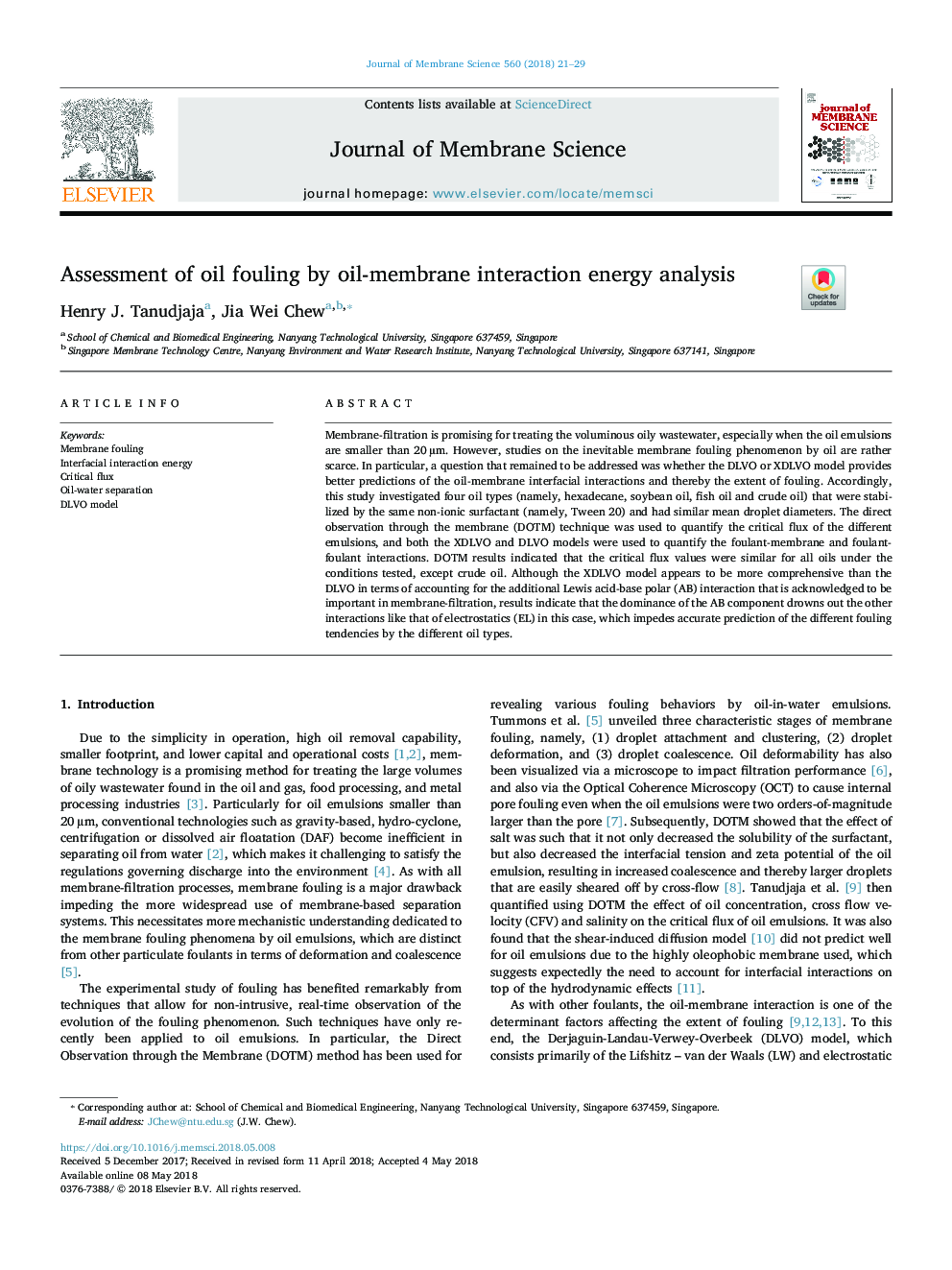| Article ID | Journal | Published Year | Pages | File Type |
|---|---|---|---|---|
| 7019787 | Journal of Membrane Science | 2018 | 9 Pages |
Abstract
Membrane-filtration is promising for treating the voluminous oily wastewater, especially when the oil emulsions are smaller than 20â¯Âµm. However, studies on the inevitable membrane fouling phenomenon by oil are rather scarce. In particular, a question that remained to be addressed was whether the DLVO or XDLVO model provides better predictions of the oil-membrane interfacial interactions and thereby the extent of fouling. Accordingly, this study investigated four oil types (namely, hexadecane, soybean oil, fish oil and crude oil) that were stabilized by the same non-ionic surfactant (namely, Tween 20) and had similar mean droplet diameters. The direct observation through the membrane (DOTM) technique was used to quantify the critical flux of the different emulsions, and both the XDLVO and DLVO models were used to quantify the foulant-membrane and foulant-foulant interactions. DOTM results indicated that the critical flux values were similar for all oils under the conditions tested, except crude oil. Although the XDLVO model appears to be more comprehensive than the DLVO in terms of accounting for the additional Lewis acid-base polar (AB) interaction that is acknowledged to be important in membrane-filtration, results indicate that the dominance of the AB component drowns out the other interactions like that of electrostatics (EL) in this case, which impedes accurate prediction of the different fouling tendencies by the different oil types.
Related Topics
Physical Sciences and Engineering
Chemical Engineering
Filtration and Separation
Authors
Henry J. Tanudjaja, Jia Wei Chew,
